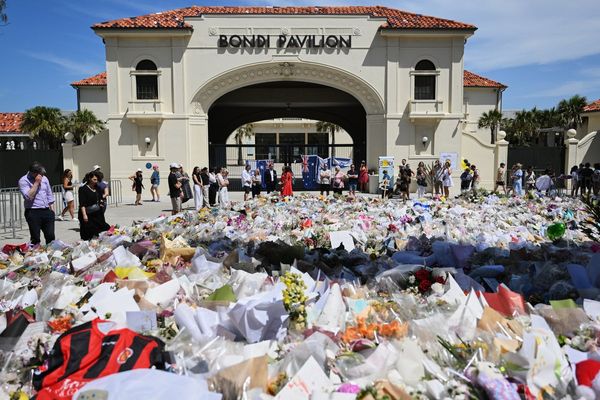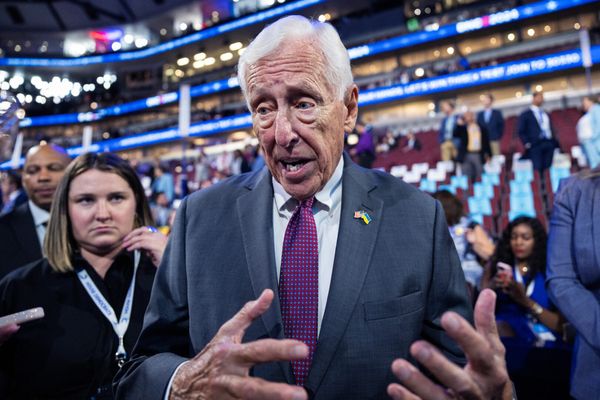
Snowy Hydro’s bogged tunnel boring machine could resume work within weeks – a key step to getting the “critical” pumped hydro project now expected to cost $12bn back on track.
Dennis Barnes, Snowy’s chief executive, says the revised contract with the builders of the 2.0 project – Italy-based WeBuild – is still in its “final stages” but he expects it to be signed off soon.
Work on the main 17km tunnel between Tantangara reservoir and a planned power station 800 metres below the surface was stalled in late 2022 after the boring machine hit soft rock.
Snowy’s amended environmental plans will go on public exhibition soon, with work expected to resume after that.
“We’re ready to go, [just] waiting for approval” from the New South Wales government, Barnes said on Thursday.
The federal energy minister, Chris Bowen, said on Thursday that the 2.0 contract had to be rewritten to reward WeBuild if they met budget and deadline goals and “punish or penalise poor performance”. Not to have reset the contract would have increased the cost beyond $12bn, Bowen said.
Barnes told Guardian Australia that the project remained “incredibly critical to the transition” of the power grid away from fossil fuels, despite costs more than doubling from the most recent estimate. Its value, though, would be at least $15bn, he said.
To provide an equivalent of 2.0’s 350,000 megawatt-hours of storage with lithium batteries would cost $130bn, Barnes claimed, citing analysts Wood Mackenzie.
The project would generate money by pumping water to a higher dam during periods of low-cost electricity and releasing it through the power plant at times when power was costly.
Snowy 2.0 is twice the size of any similar project in the world, adding to its complexity.
Snowy’s reset aims to deliver power by the second half of 2027 and commercial operations for all units by the end of 2028. That latter date is a year earlier than the Australian Energy Market Operator estimated in its latest forecast report also released on Thursday.
Ted Woodley, a former energy executive who heads a campaign against Snowy 2.0 for the National Parks Association of NSW, said the public would be “absolute mugs” to accept the latest costings.
He noted 2017 estimates of the project’s value had ranged from $4.3bn to $6.6bn and said it was “overly optimistic” to assume it was now worth $15bn.
Woodley said the cost of the HumeLink transmission project that will connect 2.0 to the grid was already $5bn – and rising – and should be included in the total cost. When operating at its full 2.2-gigawatt capacity, Snowy 2.0 would take up HumeLink’s entire capacity, he said.
In an interview with RN Breakfast on Friday, Barnes said he hopes Florence can bore at a speed of 10-20 metres a day.
At the slower end of that range, it will take the machine about 4.6 years to cover 17km. Given Snowy is now working to a plan for delivering first power by the second half of 2027, a 10 metre/day pace would miss that mark by about a year.
Such a delay would add to the $12bn cost target and diminish the project’s estimate value of $15bn as revenues would be postponed.
Woodley said that if Florence operated at the pace of the other two machines it would take seven years to cover the 17km.
Barnes said factors that contributed to 2.0’s cost increase – such as rising labour and equipment costs – were also behind a jump in the cost of building Snowy’s new gas-fired power station at Kurri Kurri near Newcastle.
That project will now cost $950m, up from $600m. But work is proceeding well and it remains on track to be operating by December 2024.
Limited access to gas would curb the plant’s operations to about 10 hours. Snowy, though, plans to source diesel if necessary to keep it operating around the clock, Barnes said.
The cost blowouts are being watched closely by debt analysts since most of the money will be raised by selling bonds.
Sonia Agarwal, an analyst at S&P Global Ratings, said government support would be crucial for Snowy to maintain its BBB+ credit rating
“Given the complex multiyear nature of the project, along with the effects of Covid-19 and inflation, the revisions to costs and completion timelines are not entirely unexpected,” Agarwal said.
“Potential revisions to the structure of the construction contract with [WeBuild’s] future generation joint venture to a cost-plus with incentives model would mean that any further delays would also remain a risk to Snowy Hydro [rating].”







